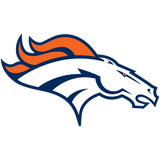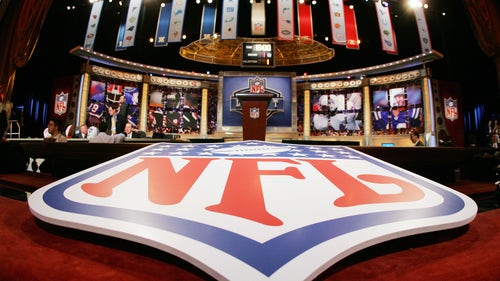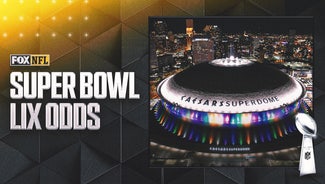
Player Safety Problems
BALTIMORE — David Ibrahimi is standing next to Ravens kicker Justin Tucker’s warm-up net, several feet behind the first down marker, near the 30-yard line. As the Bills move the ball downfield in the third quarter of Sunday’s game, in between plays, Ibrahimi quickly walks along the sideline to the opposite 30-yard line. He’s mainly zeroed in on the football, because that’s where the most contact is likely to occur, but on pass plays he’ll scan the rest of the field.
Ibrahimi, one of the two unaffiliated neurotrauma consultants (UNC) working the sidelines at this weekend’s Ravens-Bills game, is keeping his eyes open for any worrisome collisions. And his ears.
“If you’re close enough, you can hear it,” says Ibrahimi, an assistant professor of neurosurgery at the University of Maryland’s School of Medicine. “The scary thing about being on the sidelines is how loud the collisions are.”
At M&T Bank Stadium on Sunday, The MMQB spent time with the gameday medical staff as part of a behind-the-scenes look at opening weekend. We set this up well in advance of last week’s season opener in Denver, but it worked out that a few days after the scrutiny over the handling of Cam Newton’s helmet-to-helmet hits last Thursday night, we had a window into the communication on game day between the team medical staff and the safety valves the NFL has added over the past few years, including the ATC spotters sitting in a booth upstairs—this year, a second spotter was added—and the UNCs like Ibrahimi.
Sunday’s game in Baltimore was a quiet one from this perspective. The MMQB spent the third quarter on the Ravens sideline with Ibrahimi (a second UTC, one of his colleagues at Maryland’s School of Medicine, was working the Buffalo sideline), and he hadn’t been called into duty during the game. It’s rarer, he says, to have nothing happen, than to have something happen.

Ibrahimi has worked about 10 Ravens games since the UNC program began three years ago, and he estimated in all but three of those games he’s participated in the evaluation of a player. The responsibility for diagnosing a player with a concussion or returning him to play is in the hands of the team doctor, but the UNC must be present for every step of the evaluation, whether that’s reviewing video footage or taking the player back to the locker room for a full exam. Wherever Ibrahimi walks on the sideline, he makes sure to be in eyesight of the Ravens’ head team physician, Andrew Tucker, to be able to respond quickly in the event of a bad-looking collision.
This is the part of the process that was scrutinized last Thursday night—and will be investigated by both the NFL and NFLPA, as part of an agreement made this summer to enforce the game-day concussion protocol by penalizing violations with fines or forfeiture of draft picks. Newton, the reigning league MVP, was attempting to lead his team on a game-winning drive late in the fourth quarter. Broncos safety Darian Stewart lunged at him, crashing the crown of his helmet into the right earhole of Newton’s helmet. Newton lingered on the ground in pain for about 30 seconds, but eyebrows were raised across the country when he stayed in for the rest of the drive.
NFL.com’s Judy Battista reported that during the two-plus minutes before the next play, as the officials sorted out penalties from each team, medical personnel spoke with Newton and requested to see video of the hit. Those two steps are what is required in the game-day protocol if a player sustains “a mechanism of injury (“big hit”) that is reasonably expected to give rise to a concussion.” The player doesn’t have to undergo a full concussion assessment test, but the medical staff is required to at least look for obvious signs of disqualification (such as unresponsiveness or disorientation) and ask a series of five Maddock’s questions: Where are we? What quarter is it right now? Who scored last? Who did we play last game? Did we win the last game? These questions can be done as quickly as 30 seconds or less, so it would be possible to complete both this and a video review in two minutes, though the timeline would be tight.
Regardless of the investigations’ findings, opening night of the NFL season served as a sobering reminder that there is no perfect way to make a dangerous game safer. Over the past few years, the league and the players union have worked to add these safety valves to better catch and manage injuries. But, as Andrew Tucker puts it, “I don’t know if there’s a system that’s going to be 100 percent effective. We are trying to get to that, but it is hard.”
He gave an example of a situation that arose in a regular-season game last year. A player on the visiting team got sandwiched by two defenders as he was crossing the middle of the field. Tucker noticed him holding his helmet and shaking his head side to side near the Ravens sideline. It didn’t look like the officials or the opposing team medical staff noticed, so he called up to the spotter. The spotter hadn’t seen anything, but Tucker thought the player should get checked. The spotter called down to the visiting team’s medical staff, and the player was taken out for a play or two. Turns out, he’d just gotten some grass and mud stuck in his helmet and was trying to shake it free. The visiting team doctor told the UNC on his sideline he was concerned that the other team’s medical staff had the power to take one of his players off the field. “I was just so paranoid something was being missed,” Tucker says. “You want to let players play, but you want to keep them safe. There is going to be that little bit of constant tension that plays out in real time.”

Standing on the sideline with Ibrahimi for the third quarter reinforced the challenges of trying to catch a possible injury among any of the 22 players on the field in real time. It’s crowded and chaotic down on the sidelines, and the lines of sight aren’t very good. Very often, he will glance up at the stadium video boards to get a better view. The two spotters have a better vantage point from high above, and they also have use of the broadcast game feed to rewind and pause any play they want to see a second or third time. But even with everyone working diligently, there’s a margin for error, from the time it takes to communicate down from upstairs to the sideline, to the fact it’s hard to identity a concussive hit by sight alone since the mechanism of injury can vary widely.
One change that would be helpful in the name of player safety would be to allow team medical staffs to call timeouts. “That’s probably the biggest hole in the process,” says Ravens team orthopedist Leigh Ann Curl. The independent spotters have a direct line to the referee to stop the game if they see a player with clear signs of disorientation who is attempting to stay in the game and not being attended to by the medical staff, a new rule last season. Many coaches and team execs would no doubt be concerned that giving that same ability to a team’s own medical staff could open the door to teams abusing it for a competitive advantage in a game situation when they need another way to stop the clock. Honestly, so what? With the game at a health and safety crossroads, we should err on the side of player safety, rather than worrying about a team abusing a new rule to gain an advantage. If teams are going to push the boundaries of the rules, they’ll find other ways.
To make the case for this change, Curl points to a game last fall when she saw a Ravens player hit his head on the turf and grab his helmet about 50 yards away and on the opposite sideline. By the time she ran over to tell Tucker, another play had already elapsed before they could notify the ref or get the player off the field. Luckily, he wasn’t concussed, “but it was one of those cases where it would have been the classic mechanism that everybody else watching would have seen,” Curl says, “but I don’t have the authority to stop the clock.”
Here’s another thought in light of the Newton situation: Why didn’t Stewart need to be checked as well? In cases of helmet-to-helmet contact, shouldn’t both players be checked? While Stewart did not look like he targeted Newton, establishing that practice of checking both players on the side of a big hit could be another way to dissuade such hits beyond fines and penalties, since players would know the result could be getting yanked from the field to be checked for a concussion.
The Ravens doctors and Ibrahimi were reluctant to weigh in on the Newton situation, because they didn’t have all the facts of how the medical staff responded. Nor did the television audience. As bad as it looked, the outcome was a good one—Newton was not concussed, as confirmed by multiple follow-up tests. But the process matters—as does continuing to make that process as strong as possible in the name of player safety.
* * *
RG3rd chance?

Whether you believe it or not, the Robert Griffin III injury will have a significant impact in Cleveland. That’s not to say Josh McCown won’t be as capable—or more capable—of running the Browns offense than Griffin. But head coach Hue Jackson wasn’t just paying lip service when he spoke of his belief in Griffin. The Browns followed a value-driven draft, in which they weren’t going to reach for a QB, but at the same time in the backs of their minds they were comfortable going into this season with Griffin. Jackson threw himself into the reclamation project, and he motivated his still-young QB by reminding him that this was his chance to get his career back on track. Now, will Griffin have another one? The fractured bone in his shoulder landed Griffin on injured reserve, meaning that he will be out at least eight games, and could possibly miss the rest of the season if the team does not designate him as its player to return from IR. The injury happened at the end of a run, furthering concerns that Griffin is not long for this league the way he exposes himself to injuries. His future in Cleveland was open-ended entering this season, but this injury may have closed it.
* * *

The Fine 15
1. New England (1-0): Hell hath no fury like the Patriots scorned. What they do consistently better than any team in the league is identify and expose the opponent’s weakness—even when they’re without their top two strengths, Tom Brady and Rob Gronkowski.
2. Pittsburgh (1-0): Monday night’s game was exactly why I picked the Steelers to go to the Super Bowl this season (mental note for next year: doubling down on Super Bowl pick after Week 1 is probably ill-advised). Look at all the pieces they’re missing on offense: Le’Veon Bell (suspended), Martavis Bryant (suspended), Markus Wheaton (injured) and Ladarius Green (injured). And they’re still that explosive on offense.
3. Carolina (0-1): Can't read too much into a one-point road loss. One under-the-radar takeaway: I'd forgotten just how good Kelvin Benjamin is.
4. Arizona (0-1): They got Belichick’d. It happens. Carson Palmer, making plenty of gutsy throws into tight windows late in the game, looked no worse for the wear after last season’s postseason meltdown. Defense will only get better as Tyrann Mathieu gets healthier and can be deployed as the Honey Badger again.
5. Denver (1-0): Elway looks like a genius. Here’s the thing about a young QB like Trevor Siemian: Experience will teach both him and opposing defenses. Will be interesting to see how he adjusts the next few weeks.
6. Green Bay (1-0): Aaron Rodgers was unimpressed with the offense’s performance in the win at Jacksonville. That attitude is a good thing.
7. Seattle (1-0): Russell Wilson’s ankle is a concern, because his mobility is a catalyst for their offense. But after the Patriots, the Seahawks are the most consistent team in the NFL.
8. Cincinnati (1-0): Strong road win against a Jets defensive front that was looking like the old Sack Exchange. A.J. Green wants you to know he is not to be forgotten in the elite receiver conversation.
9. Giants (1-0): Not a perfect performance on defense, but that $200 million in upgrades was well-spent.
10. Baltimore (1-0): Held the Bills to 160 yards of total offense. That’s the Ravens defense we’re used to seeing.
11. Chiefs (1-0): If they made the playoffs after a 1-5 start last season, climbing out of a 21-point deficit at home was nothing. But boy, do they miss Justin Houston.
12. Oakland (1-0): This team hasn’t had edge in a long while. That’s why Jack Del Rio’s gutsy decision to go for the two-point conversion late in the game, instead of kicking a tying extra point, was huge. It’s the kind of call that has an impact long beyond this one game.
13. Houston (1-0): All the focus has been on Brock Osweiler, but new running back Lamar Miller brings the Texans offense the balance they didn’t have last season.
14. Tampa Bay (1-0): Jameis Winston’s four-touchdown Week 1 performance was exactly the reason they promoted Dirk Koetter to head coach.
15. Detroit (1-0): No Calvin Johnson, but Matthew Stafford’s most important partner in crime these days is offensive coordinator Jim Bob Cooter. In the nine games since Cooter took over the job in the middle of last season, including Sunday, Stafford has thrown for 22 TDs and only two INTs.
• Question or comment? Email us at talkback@themmqb.com.
This article originally appeared on











